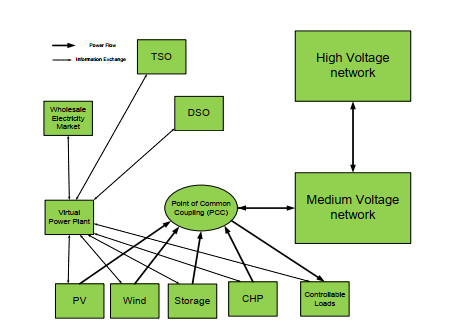1.
Introduction
Diophantine equation is a classical problem in number theory. Let [α] denote the integer part of the real number α and N be a sufficiently large integer. In 1933, Segal [27,28] firstly studied additive problems with non-integer degrees, and proved that there exists a k0(c)>0 such that the Diophantine equation
is solvable for k>k0(c), where c>1 is not an integer. Later, Deshouillers [5] improved Segal's bound of k0(c) to 6c3(logc+14) with c>12. Further Arkhilov and Zhitkov [1] refined Deshouillers's result to 22c2(logc+4) with c>12. Afterwards, many results of various Diophantine equations were established (e.g., see [7,10,14,16,17,18,19,21,25,41,42]). In particular, Laporta [17] in 1999 showed that the equation
is solvable in primes p1, p2 provided that 1<c<1716 and N is sufficiently large. Recently, the range of c in (1.2) was enlarged to 1<c<1411 by Zhu [40]. Kumchev [15] showed that the equation
is solved for almost all N provided that 1<c<1615, where m is an integer and p is a prime. Afterwards, the range of c in (1.3) was enlarged to 1<c<1711 by Balanzario, Garaev and Zuazua [3].
In 1995, Laporta and Tolev [18] considered the equation
with prime variables p1,p2,p3. Denote the weighted number of solutions of Eq (1.4) by
They established the following asymptotic formula
for any 0<δ<13 and 1<c<1716. Afterwards, the range of c was enlarged to 1<c<1211 by Kumchev and Nedeva [16], to 1<c<258235 by Zhai and Cao [39], and to 1<c<137119 by Cai [4].
In this paper, we first show a more general result related to (1.5) by proving the following theorem.
Theorem 1.1. Let N be a sufficiently large integer. Then for 1<c<3+3κ−λ3κ+2, we have
for any 0<δ<13, where (κ,λ) is an exponent pair, and the implied constant in the O−symbol depends only on c.
Choosing (κ,λ)=BA2BABABABAB(0,1)=(81242,132242) in Theorem 1.1, we can immediately get the following corollary, which further improves the result of Cai [4].
Corollary 1.2. Under the notations of Theorem 1.1, for 1<c<837727 the asymptotic formula (1.6) follows.
It is easy to verify that the range of c in Corollary 1.2 is larger than one of Cai's result. Our improvement mainly derives from more accurate estimates of exponential sums by combining Van der Corput's method, exponent pairs and some elementary methods. Also the estimates of exponential sums has lots of applications in problems including automorphic forms (e.g., see [8,11,12,20,22,24,29,30,31,32,33,34,35,36,37,38]).
Notation. Throughout the paper, N always denotes a sufficiently large integer. The letter p, with or without subscripts, is always reserved for primes. Let ε∈(0,10−10(3+3κ−λ3κ+2−c)). We denote by {x} and ‖x‖ the fraction part of x and the distance from x to the nearest integer, respectively. Let 1<c<3+3κ−λ3κ+2 and
2.
Auxiliary lemmas
To prove Theorem 1.1, we need the following lemmas.
Lemma 2.1 ([9,Lemma 5]). Suppose that zn is a sequence of complex numbers, then we have
where Re(t) and ¯t denote the real part and the conjugate of the complex number t, respectively.
Lemma 2.2. Suppose that |x|>0 and c>1. Then for any exponent pair (κ,λ) and M≤a<b≤2M, we have
Proof. We can get this lemma from [6,(3.3.4)].
Lemma 2.3 ([2,Lemma 12]). Suppose that t is not an integer and H≥3. Then for any α∈(0,1), we have
where
Lemma 2.4 ([9,Lemma 3]). Suppose that 3<U<V<Z<X, and {Z}=12, X≥64Z2U, Z≥4U2, V3≥32X. Further suppose that F(n) is a complex valued function such that |F(n)|≤1. Then the sum
can be decomposed into O(log10X) sums, each of which either of type {I}:
with N>Z, where a(m)≪mε and X≪MN≪X, or of type {II}:
with U≪M≪V, where a(m)≪mε,b(n)≪nε and X≪MN≪X.
Lemma 2.5. Let f(t) be a real value function and continuous differentiable at least three times on [a,b](1≤a<b≤2a), |f‴(x)|∼Δ>0, then we have
Moreover, if 0<c1λ1≤c2λ1, |f″(x)|∼λ1a−1, then we have
if c2λ1≤12, then we have
Proof. The first result was proved by Sargos [26]. And the remaining two results were due to Jia [13].
Lemma 2.6 ([23,Lemma 2]). Let M>0, N>0, um>0, υn>0, Am>0, Bn>0 (1≤m≤M,1≤n≤N). Let also Q1 and Q2 be given non-negative numbers, Q1≤Q2. Then there is one q such that Q1≤q≤Q2 and
Lemma 2.7 ([36,Lemma 5]). Let f(x), g(x) be algebraic functions in [a,b], |f″(x)|∼1R, f‴(x)≪1RU, U≥1, |g(x)|≪G, |g′(x)|≪GU−1. [α,β] is the image of [a,b] under the mapping y=f′(x). nu is the solution of f′(n)=u.
Then we have
Lemma 2.8 ([13,Lemma 3]). Suppose that x∼N, f(x)≪P, and f′(x)≫Δ. Then we have
Lemma 2.9. For 0<α<1 and any exponent pair (κ,λ), we have
Proof. Throughout the proof of this lemma, we write H=X−κc+1−λ+κ1+κ for convenience. Using Lemma 2.3 we can get
Then by the expansion
where
we have
where we estimated the sum over n by Lemma 2.2.
In a similar way, we have
Then this lemma follows.
Lemma 2.10 ([42,Lemma 2.1]). Suppose that f(n) is a real-valued function in the interval [N,N1], where 2≤N<N1≤2N. If 0<c1λ1≤|f′(n)|≤c2λ1≤12, then we have
If |f(j)(n)|∼λ1N−j+1(j=1,2), then we have
If |f(j)(n)|∼λ1N−j+1(j=1,2,3,4,5,6), then we have
where (κ,λ) is any exponent pair.
Lemma 2.11 ([9,Lemma 6]). Suppose that 0<a<b≤2a and R is an open convex set in C containing the real segment [a,b]. Suppose further that f(z) is analytic on R. f(x) is real for real x∈R. f″(z)≤M for z∈R. There is a constant k>0 such that f″(x)≤−kM for all real x∈R. Let f′(b)=α and f′(a)=β, and define xυ for each integer υ in the range α<υ<β by f′(xυ)=υ. Then we have
3.
The estimate of S(α)
Lemma 3.1. Let P56≪X≪P, H=X1−(1+2κ)c+λ2+2κ and ch(α) denote complex numbers such that ch(α)≪(1+|h|)−1. Then uniformly for α∈(τ,1−τ), we have
for any a(m)≪mε, where (κ,λ) is any exponent pair, X≪MN≪X and M≪Y with Y=min{X1,X2,X3,X4,X5,X6,X7,X8},
Proof. It is easy to deduce that
where Kh=∑m∼M|∑n∼Ne((α+h)(mn)c)|. According to Hölder's inequality, we have
Let zn=zn(m,α)=(α+h)(mn)c. Suppose that Q, J are two positive integers such that 1≤Q≤Nlog−1X, 1≤J≤Nlog−1X. For the inner sum in (3.2), applying Lemma 2.1 twice, we can get
where
Let Δ(nc;q,j)=(n+q+j)c−(n+q)c−(n+j)c+nc, G(m,n)=(α+h)mcΔ(nc;q,j). Then zn−zn+q−zn+j+zn+q+j=G(m,n). Thus we have
For any t≠1,0, we have
then
and
If c(c−1)(c−2)(α+h)qjMcNc−3≤1100, by Lemma 2.5 we have
From now we always suppose that c(c−1)(c−2)(α+h)qjMcNc−3≥1100. By Lemma 2.7 we have
where
By Lemma 2.8, the contribution of R(m,q,j) to E(q,j) is
Then we only need to deal with the following exponential sum
where Iυ is a subinterval of [M,2M]. For a fixed υ, we define Δλ′=Δ(nλ′υ;q,j), where λ′ is an arbitrary real number. We take the derivative of m in (3.8) and get
It follows from (3.7) that
Recalling (3.6), we can get
Thus for m, |∂2G∂n2(m,nυ)|−12 is monotonic. Let g(m)=G(m,nυ(m))−υnυ(m). Then we have
where
From the above formulas we can obtain
Using Lemma 2.5 and partial summation we can get
By (3.5), (3.9) and (3.11), we have
Inserting (3.12) into (3.3), we obtain
Then choosing optimal J∈[0,Nlog−1X] and Q∈[0,Nlog−1X] and using Lemma 6 twice we can get
where
Recalling the definitions of H and Y, we have
and Lemma 3.1 is proved.
Lemma 3.2. Let P56≪X≪P, H=X1−(1+2κ)c+λ2+2κ, F=(h+α)Xcand ch(α) denote complex numbers such that ch(α)≪(1+|h|)−1. Then uniformly for α∈(τ,1−τ), we have
for any a(m)≪mε, b(n)≪nε, where (κ,λ) is any exponent pair, X≪MN≪X and
Proof. Taking Q=[X2−(1+2κ)c+λ1+κlog−1X], then we have Q=o(N). By Cauchy's inequality and Lemma 2.1, we have
where Eq=∑n∼N|b(n+q)b(n)||∑m∼Me(G(mn))| and G(m,n)=G(m,n,q)=(h+α)mcΔ(n,q;c), Δ(n,q;c)=(n+q)c−nc.
If |∂G∂m|≤103Mq−2, by Lemma 2.10 we have
noting that M≫XF.
Now we suppose |∂G/∂m|>103Mq−2. By Lemma 11 we get
where s(r,n)=G(M(r,n),n)−rm(r,n), φ(r,n)=(Fq)12MN12|∂2G(m(r,n),n)∂m2|−12 and
Thus we have
So it suffices to bound the sum
Let T=[Fq3/M2N] and R=Fq/MN. By Cauchy's inequality and Lemma 2.1 again we get
where
and where we used the estimate
It is easy to check that 10<T=o(R).
Recall that s(r,n)=G(m(r,n),n)−rm(r,n), where m(r,n) denotes the solution of
It is easy to deduce that
So we can obtain
which implies that |H(j)|∼tMN−j, (j=0,1,2,3,4,5,6). Denote by I(r,t) the interval N<n≤2N, r1(n)<n≤r2(n)−t. Then we have
Thus using partial summation, we get
with the exponent pair (κ,λ), if we note that M≫X26−533(1+2κ)c+λ1+κF539. From (3.15)–(3.18) we get that for any 1≤q≤Q,
Now this lemma follows from inserting (3.19) into (3.14).
Lemma 3.3. For τ≤α≤1−τ, we have
where (κ,λ) is any exponent pair.
Proof. Throughout the proof of this lemma, we write H=X1−(1+2κ)c+λ2+2κ for convenience. By a dissection argument we only need to prove that
holds for P56≤X≤P and τ≤α≤1−τ. According to Lemma 2.3, we have
By the expansion
where
we get
where we estimated the sum over n by Lemma 2.2 with the exponent pair (12,12).
Let R=max{X3−(1+2κ)c+λ1+κF−1,X4−2(1+2κ)c+2λ1+κ,X26−533(1+2κ)c+λ1+κF539}. Recall the definition of Y in Lemma 3.1. Let U=R, V=X(1+2κ)c+λ1+κ−1, Z=[XY−1]+12. By Lemma 4 with F(n)=e((h+α)nc), then we reduce the estimate of
to the estimates of sums of type I
and sums of type II
where a(m)≪mε, b(n)≪nε, X≪MN≪X. By Lemma 3.1, we get
By Lemma 3.2, we get
From (3.23) and (3.24) we can obtain
Now (3.20) follows from (3.21), (3.22) and (3.25). Thus we complete the proof of this Lemma.
4.
Proof of the theorem
It is easy to see that
4.1. Evaluation of R1(N)
Following the argument of Laporta and Tolev [18,pages 928–929], we can get that
for 1<c<32 and any 0<δ<13, where the implied constant in the O−symbol depends only on c.
4.2. Evaluation of R2(N)
Let
We can get
where we used
Now, we start to estimate the absolute value on the right hand in (4.3). By Cauchy's inequality we have
Then we have
By Lemma 3.3, we have
where we used the trivial bound T(\alpha, X)\ll X . By Lemma 2.9, Lemma 3.3 and (4.4), we get
Thus, combining (4.6)–(4.8) we obtain
By (4.3), (4.5) and (4.9), we can obtain
Now putting (4.1), (4.2) and (4.10) into together, we have
follows for any 0 < \delta < \frac{1}{3} , where the implied constant in the O- symbol depends only on c . Thus we complete the proof of Theorem 1.1.
Acknowledgment
The authors would like to thank the referees for their many useful comments. This work is supported by National Natural Science Foundation of China (Grant Nos. 11801328 and 11771256).
Conflict of interest
The authors declare no conflict of interest.























 DownLoad:
DownLoad: